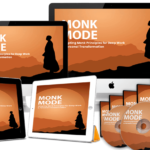Introduction
A financial blog is a platform where individuals share insights, advice, and information related to personal finance, investing, budgeting, and other money-related topics. These blogs often provide valuable content to help readers make informed financial decisions, manage their money, and plan for the future. Financial bloggers may cover a wide range of topics, including saving strategies, investment tips, retirement planning, and real estate. They often aim to build a loyal audience by offering high-value content, engaging with their readers, and establishing themselves as trusted sources within the personal finance community. Additionally, financial blogs may explore various monetization strategies, such as affiliate marketing, sponsored content, and selling digital products or services, to generate income.
Some common topics associated in financial blogs includes
Investing: This topic covers various investment strategies, stock market insights, and tips for building a diversified investment portfolio.
Accounting: Blogs may discuss accounting principles, financial reporting, and best practices for managing business finances.
Saving: Content related to saving money, budgeting tips, and strategies for achieving financial goals through saving.
Taxes: This topic covers tax planning, tax-saving strategies, and insights into tax law changes that may impact individuals and businesses.
Loan: Information on different types of loans, loan management, and tips for borrowing responsibly.
Income Management: Insights into managing personal or business income, including budgeting, cash flow management, and strategies for increasing income.
Wealth Management: Content related to managing and growing wealth, including insights into financial planning, retirement planning, and estate planning.

How do finance blogs make money?
Finance blogs make money through various channels, including display ads, affiliate sales, and product sales. Display ads are a common source of income for finance bloggers, as they pay well and can be displayed in sidebars or within blog articles. Affiliate sales involve promoting external products or services through links or graphics, for which bloggers earn a commission. Additionally, some bloggers create and sell their own products, such as online courses and ebooks, to generate revenue. These monetization strategies, when combined with a focus on providing valuable financial advice, can help finance blogs become profitable ventures.
How do finance blogs attract readers?
Finance blogs can attract readers by identifying and targeting a specific audience, providing valuable financial advice, and promoting their content through social media and email marketing. It is important to focus on a specific niche within finance that is not yet saturated with blogs, and to engage with other members of online communities related to that niche to establish oneself as an expert and build relationships with potential readers.
Additionally, finance bloggers can monetize their blogs by recommending financial products through affiliate marketing, selling digital products or courses, and offering coaching or consulting services.
By consistently providing high-quality content and effectively promoting their blogs, finance bloggers can attract and retain a loyal readership and generate income from their ventures.
How to build a loyal audience for a finance blog?
To build a loyal audience for a finance blog, several strategies can be employed:
- Define Your Target Audience: Identifying and understanding the demographics and financial goals of your audience is crucial. This information helps tailor content to their specific needs and interests.
- Engage in Finance Communities: Join online communities related to your niche and interact with other members. This helps establish expertise and build relationships with potential readers.
- Build a Network of Bloggers: Collaborate with small finance bloggers to promote each other’s content, increasing visibility and credibility within the niche.
- Create Relevant and Clear Content: Ensure that your content is relevant, clear, and concise to provide value and position yourself as a trusted source in the personal finance community
- Leverage Social Media and Email Marketing: Share blog posts on social media, respond to comments, and engage with followers. Additionally, build an email list to send regular newsletters and updates, keeping the audience informed and engaged.
- Serve Before You Sell: Offer high value to your audience before promoting products or services. Building trust and providing valuable content are essential for long-term loyalty.
How to create engaging content for a finance blog?
To create engaging content for a finance blog, consider the following best practices:
- Offer high value to the audience before promoting products or services. Building trust from the ground up can lead to successful products/services once a strong following is established
- Creating and maintaining a consistent schedule for producing high-quality content keeps the audience engaged and coming back for more.
- Join and engage with online communities related to the finance niche to establish expertise and build relationships with potential readers.
- Use the power of social media and email marketing to build and maintain a loyal audience. Engage with the audience, respond to comments, and share helpful content to establish relationships and keep them coming back for more
- Think about the specific group of people you want to help with your blog. For example, you could focus on personal finance for millennials, or for people who are self-employed. The more specific you can get, the better
How to use email marketing to promote a finance blog’s content strategy?
To use email marketing to promote a finance blog’s content strategy, consider the following strategies:
- Create an email list of finance enthusiasts who are interested in your blog’s content. Offer a lead magnet, such as a free ebook or a financial planning template, to encourage visitors to subscribe to your email list.
- Segment your email list based on the interests and needs of your subscribers. For example, you can have segments for budgeting, investing, and retirement planning. This allows you to send targeted content to specific groups of subscribers.
- Send out regular newsletters to your email list, featuring your latest blog posts, financial tips, and industry news. Make sure the content is engaging and valuable to your subscribers.
- Use your email list to promote lead magnets, such as free webinars, ebooks, or courses. This can help you attract new subscribers and nurture existing ones.
- Provide high-value content in your emails, such as exclusive financial tips, case studies, and success stories. This can help you build trust and keep your subscribers engaged










